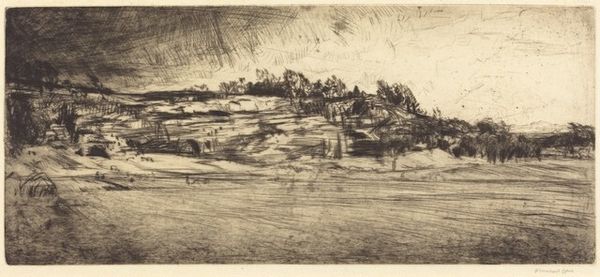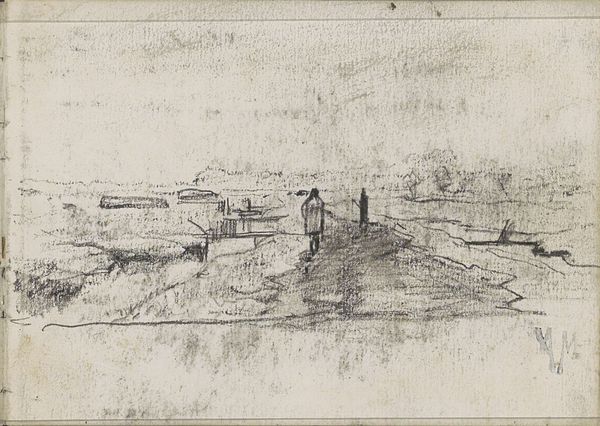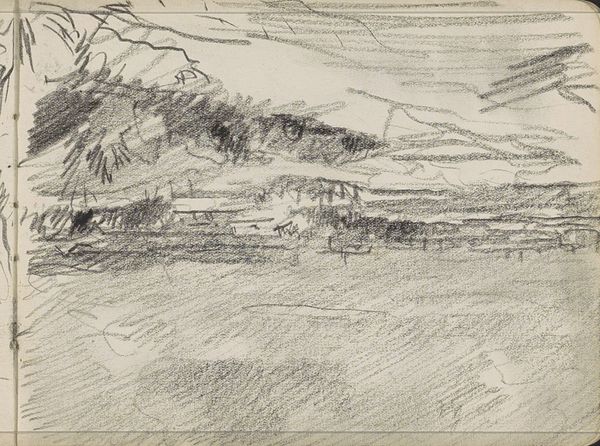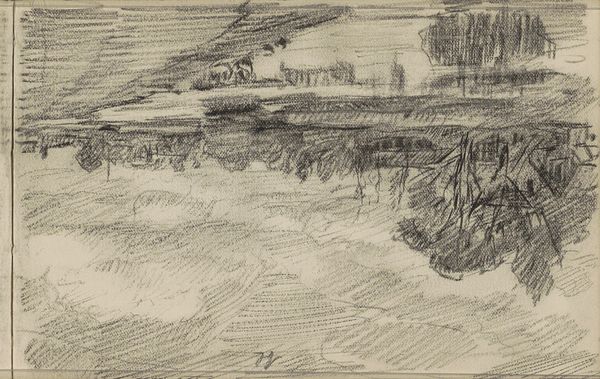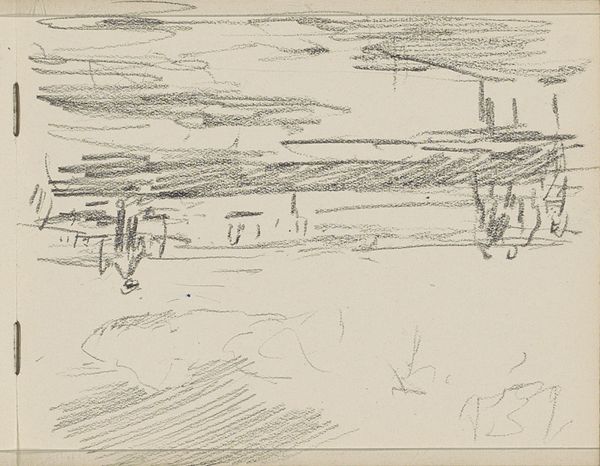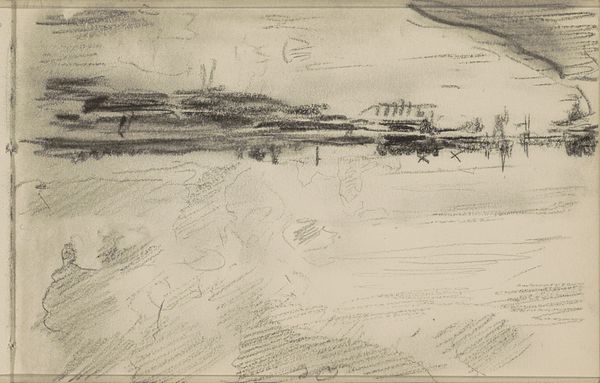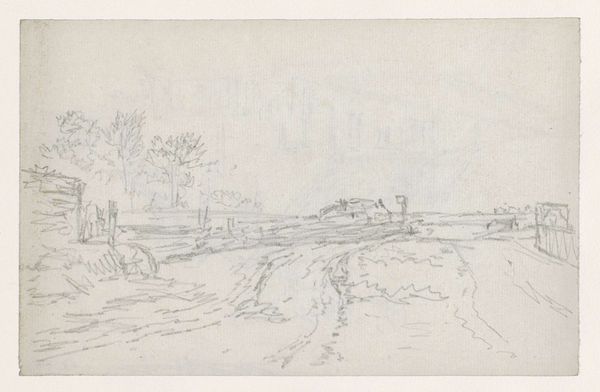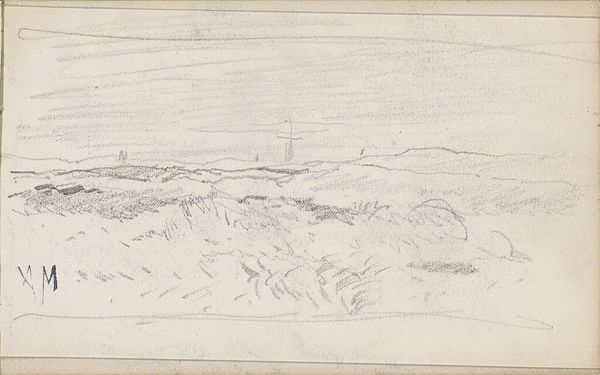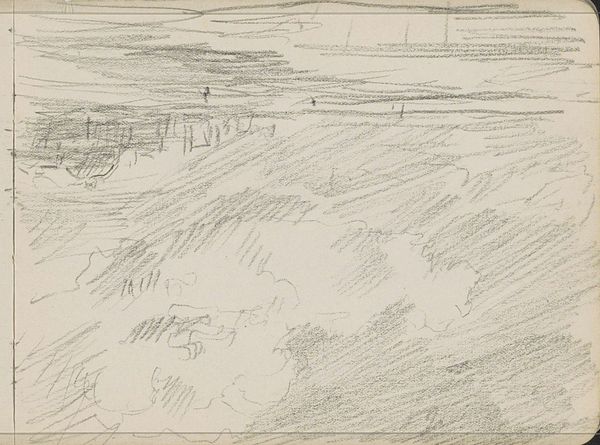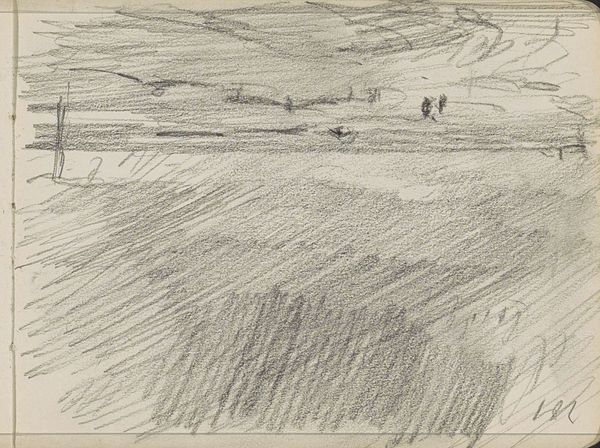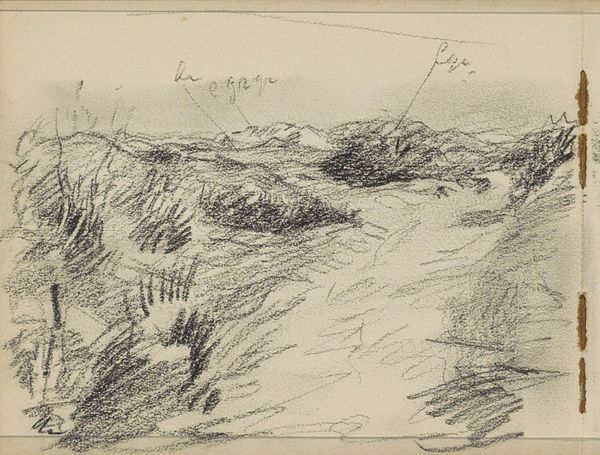
Copyright: National Gallery of Art: CC0 1.0
Editor: This is David Young Cameron's "The Esk," an etching from 1912. The subdued palette creates a really tranquil, almost melancholy atmosphere for me, but the bold use of line in the foreground also adds a dynamic energy. What structural elements stand out to you? Curator: Observe how Cameron uses a limited range of tonal values to define space, yet establishes significant visual depth through carefully considered compositional strategies. Note the winding river, a dominant horizontal element, contrasted by the verticality of the lone tree on the left. These relationships construct a visual harmony and guide our sight. Editor: So the placement of elements really drives the viewing experience? Curator: Precisely. Semiotically, each shape possesses a visual sign. Notice how Cameron uses hatching and cross-hatching techniques. This does not only add depth; it builds texture. Further analyze the perspective lines used here to manipulate space. Editor: The varying line weights definitely create a sense of volume in the buildings in the distance, but it almost abstracts the foreground. Curator: Exactly. It oscillates between representation and pure mark-making. How would you define the overall structure? Do you see any underlying geometric arrangements contributing to the visual unity? Editor: I'm starting to see how the formal structure, and its reliance on line, is the foundation of the whole landscape. Curator: And this careful attention to structure allows the landscape to breathe—a dance between representation and abstraction that encourages a very attentive viewing.
Comments
No comments
Be the first to comment and join the conversation on the ultimate creative platform.
